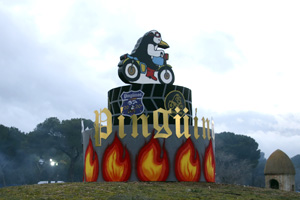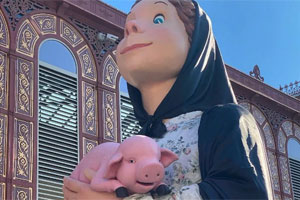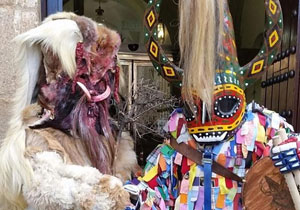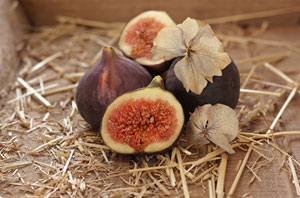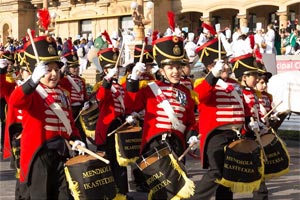The Devil's Escape
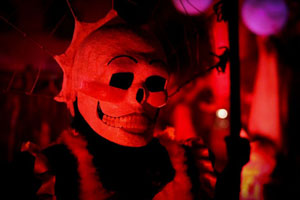
Every summer, Valverde de Leganés celebrates La fuga de la diabla, a festival declared to be of Regional Tourist Interest, which revolves around Saint Bartholomew, one of the first disciples chosen by Jesus to preach his doctrine.
Christian tradition has it that in a fierce battle he defeated the devil, overcoming all the temptations, deceptions and trickery that he had presented to him.
What does the Fuga de la Diabla festival consist of?
In Valverde de Leganés a great spectacle takes place in which, during the night, the "Gran Diabla", after escaping from the custody of San Bartolomé, and accompanied by a retinue of warriors and devils, travels through streets and squares plunged in darkness, spreading fear and terror to locals and strangers alike, using fire as her weapon.
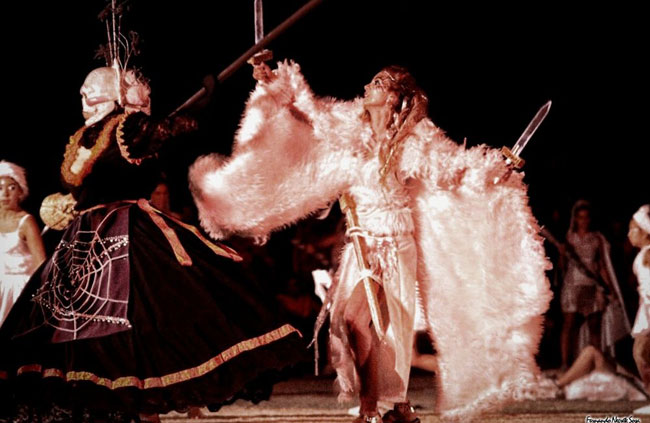
Once they have finished their journey through the streets of the town, all their entourage show their power and veneration to the Devil in a spectacle of fire and fights against the "Forces of Good".
In the Great Final Battle, the Devil will have to face an angel commanded by San Bartolomé to escape eternally from her captivity, but the "Forces of Good" end up defeating the Devil and she is captured and taken captive to the tower of the church, celebrating the victory with a great bonfire around which good and bad and a large audience dance.
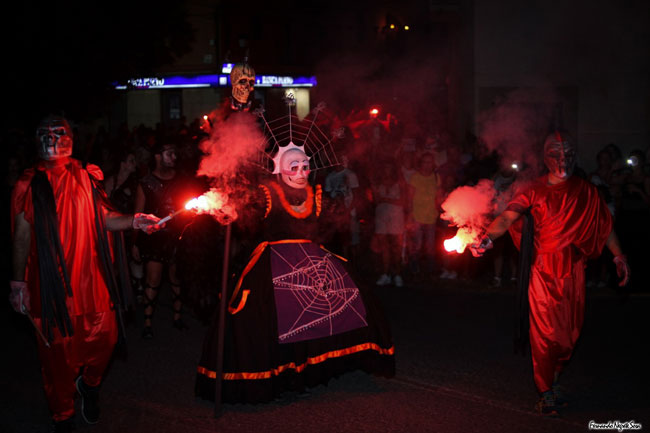
Several thousand people witness the different episodes of this fiesta, which continues to be put on by the many volunteers and youth clubs and friends who collaborate in the development of the spectacle.
Since 13 May 2016, "La Fuga de la Diabla" has been declared a Festival of Regional Tourist Interest.
The uniqueness and participation characterise this festival where children and adults recreate a part of the history of Valverde de Leganés.
Origin of the Fuga de la Diabla
Coinciding with the tradition that tells of the saint's victory over the devil and at midnight on 23 August (the beginning of Saint Bartholomew's Day), there was a traditional festival in the village called "La diabla", or rather: "La Fuga de la Diabla".
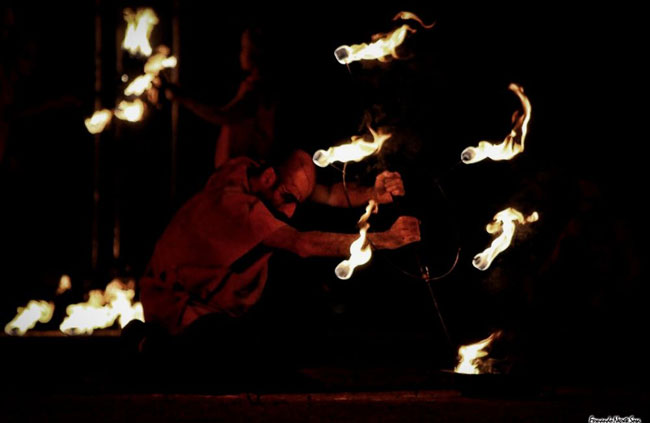
There are two theories behind this tradition:
- One of these theories recalls the massacre of Calvinist Protestants that took place on the night of St. Bartholomew's Day in 1572 during the Wars of Religion. The Catholics took advantage of the darkness of the night and disguised themselves in dark clothes, covered their faces and armed themselves with clubs, pitchforks, knives, etc.
- The other theory is based on Christian tradition. Saint Bartholomew was harassed by the devil with deception and temptation, and a fierce battle ensued between the two, from which the saint emerged victorious. Tradition once again pits the two forces against each other: that of evil, represented by the Devil, who escapes. And that of good, whose protagonist, Saint Bartholomew, recaptures her and takes her back into his custody.
In essence, parents told their children that they had to be good, obedient, studious, because otherwise, at that time of night, the Devil would escape and take them with him to the church tower where Saint Bartholomew kept him locked up all year round, except on that fateful night, when this master of deceit, trickery, lies and insidiousness managed to outwit the trusting apostle. Of course, at the end of the night, the apostle defeated the Devil and locked him up again.
There were some people who that night, dressed in a long dark skirt, their heads covered with a black scarf, dragging chains and carrying a broom, would go through the streets of the village, so that the children could check the veracity of everything, and from time to time they would hit the doors of the houses with brooms.
Places to visit in Valverde de Leganés
The town of Valverde de Leganés is located between meadows and large extensions of crops, just 20 kms from the city of Badajoz.
In this town the Gran Embalse de Piedra Aguda stands out, which presents an atypical image in comparison with other reservoirs in the area, thanks to the large number of eucalyptus trees that populate its banks, providing shade and creating an ideal environment to enjoy nature with the family.
Also of note are monuments such as the Madre de Dios Convent, which is in the process of being remodelled, although it is possible to visit the outside area.
Another of this town's tourist attractions are its megalithic routes. Around the town, several megalithic constructions can be found as testimony to the passage of the first settlers of this region. The Dolmen del Romo, the Dolmen del Rebellao and the Menhir del Gamonal stand out.
Finally, if you pass through the area, be sure to visit its unique trees, especially the Encina Madre holm oak, which is more than 500 years old and is one of the largest holm oaks on the peninsula. With a crown diameter of 32 metres, it is located in the area around Los Arcos, where you will also find Los Arcos Castle and very close to it, you can visit the Dolmen del Romo.
Gastronomy and typical dishes
In Valverde de Leganés they like good food, as in the whole of Extremadura. Iberian cured meats stand out, and the town has several production companies that are famous throughout the region. (Marabé and Breva).
They are also great producers of olives and olive oil. Sheep's cheese is another of the star products to be found in this area. And you can't miss Las Migas and Gazpacho Extremeño.

